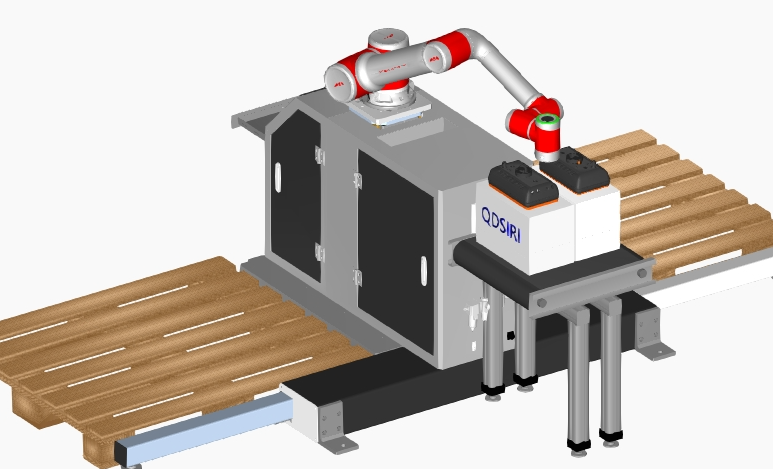How to choose the appropriate palletizing robot?
In modern industrial production, the application of automation technology is becoming increasingly widespread, including the use of palletizing industrial robots. Palletizing industrial robots can enhance production efficiency and reduce labor costs. However, choosing the right palletizing industrial robot is not an easy task. The following are several considerations when purchasing palletizing robots.
Determine the load and the arm span
First, estimate the weight of the goods to be stacked, and also take into account the weight of the required fixtures, in order to determine the load capacity of the robotic arm.
Pay attention to the condition of the goods and the pallet. Even if the goods are light, but the pallet is large, the reach of the low-load mechanical arm may not be sufficient. Therefore, you need to consider both aspects together.
2. Clarify production requirements
Taking into account the expected production volume, such as whether it is large-scale continuous production or small-batch production. If it is large-scale production, high-speed and efficient palletizing robots may be required; for small-batch production, more flexible robots can be considered.
Clarify the types of products. If the product types are simple, the program settings for the robot will be relatively straightforward; if the products are diverse, a robot that can handle the stacking of various products is required.
3. Consider the factory environment
Evaluate the available space within the factory to ensure that the installation of the robots will not interfere with the normal operation of other equipment and will not cause space congestion.
Be mindful of the layout constraints. Factors such as the aisle positions in a factory and the routes for goods in and out can affect the placement of the robot and its working area. Select a robot size and working radius that are compatible with these factors.
4. Focus on reliability and maintenance
In terms of reliability, one can refer to the brand reputation of the robot, user reviews, technical parameters, etc. to understand the probability of its malfunction.
In terms of maintenance costs, it is advisable to choose robots that are easy to maintain, such as those with easily replaceable components and a well-established after-sales service system. This can reduce production disruptions caused by maintenance and lower maintenance costs.
5. Consider special functional requirements
If the production mode is one of multiple varieties with small batches, frequent line changes and product replacements are necessary. In this case, it is necessary to choose a robot that can stack products of various specifications. Additionally, the robot's programming should be convenient and fast, and be able to quickly adapt to new product stacking requirements.
6. Cost Consideration
Evaluate the performance, quality and price of the robot comprehensively. One cannot merely focus on the low price; one should also consider the cost-effectiveness. For instance, a robot with excellent performance and high quality may have a higher price, but it has high production efficiency, fewer malfunctions, and a higher return rate in the long run, making it more beneficial for the enterprise.

